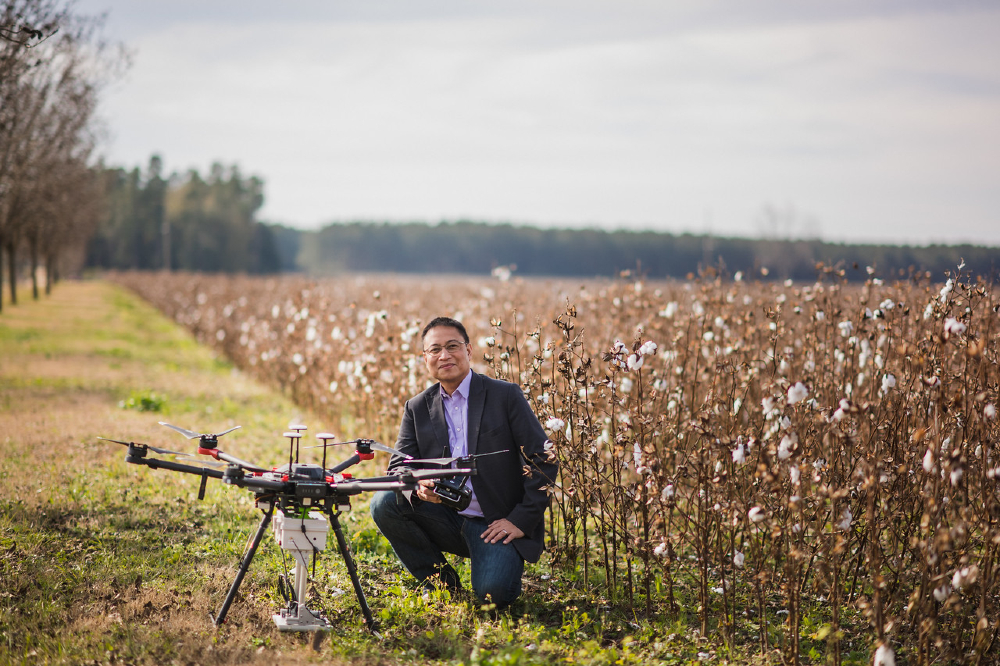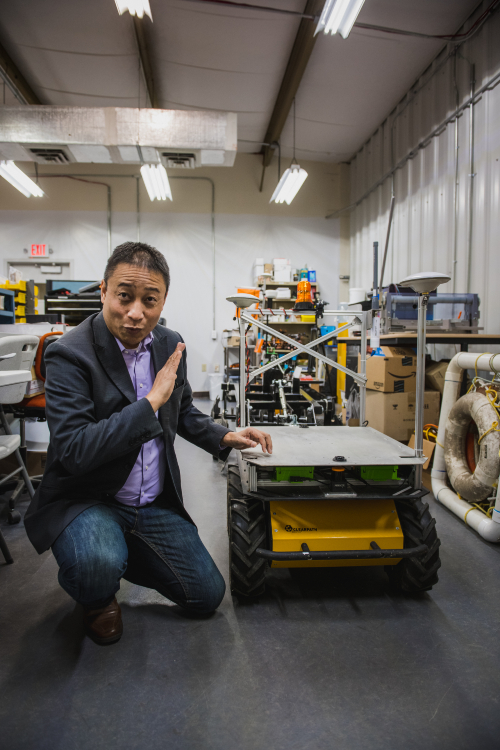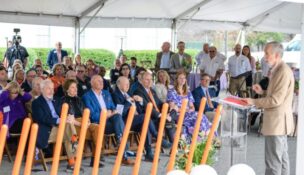How drones are giving South Carolina farmers an advantage in the field
Krys Merryman //December 5, 2022//
How drones are giving South Carolina farmers an advantage in the field
Krys Merryman //December 5, 2022//

Joe Mari J. Maja’s future is up in the air. Quite literally.
The research engineer and assistant professor at Clemson University’s Edisto Research and Education Center and Department of Agricultural Sciences has been concentrating as of late on small, unmanned aircraft systems and robotics.
As an unmanned aerial vehicle pilot for Clemson University, his research — Maja also oversees the department’s Sensor and Automation Laboratory — has given farmers the tools necessary to address environmental needs based on real-time data.
Over the past few years, Maja has contributed significantly to the research enterprise at Clemson. He has worked to address current and future problems for farmers and seeks to provide solutions through his research on counting plants and tracking animals in open-field environments, crop health monitoring, and automation.
Maja has also collaborated in research projects in the areas of specialty crops, animal science, crop science and precision agriculture. Through his research effort, Maja hopes to alleviate the challenges of farming by having agri-tronic devices work for the farmers.
Two agricultural technology projects Maja is working on are drone and radio frequency identification and a defoliation sprayer.
Related content: How technology is reshaping South Carolina's agribusiness industry
Related content: Why this Greenville tech company sees agriculture as the future
Related content: Check out the latest issue of SCBIZ Magazine
Plant inventory data collection is time-consuming, costly, and inaccurate. Accurate inventory allows for better forecasting, profit projections, and precise delivery to customers. Increasing labor costs and shortages are just one of the pressing problems in the nursery industry, said Maja.
“There is an increased need for automated technologies to address these problems, especially in the unstructured environment of nurseries,” he said.
Drones have been used to read radio frequency identification tags for the inventory of vehicles and boxes in warehouses, but to date, they have limited use in nurseries. One advantage of drones is their ability to execute complex low-altitude flights and carry various sensing payloads, Maja said. These tags offer a significant advantage over barcodes for inventory since they do not rely on the line of sight to capture data. Merging these tags with a drone is suggested as a plausible method to automate the inventory process in nurseries, he said.
 A collaborative team consisting of Clemson University, University of Arkansas, Michigan State University, Virginia Tech, and the USDA, along with industry collaborators such as Avery Denison and Dudley Nurseries, have been working on developing solutions using drones and radio frequency identification tags to automate inventory in nurseries since last year, according to Maja. The team installed more than 9,000 tags at Dudley Nurseries and has been field-testing the technology since February.
A collaborative team consisting of Clemson University, University of Arkansas, Michigan State University, Virginia Tech, and the USDA, along with industry collaborators such as Avery Denison and Dudley Nurseries, have been working on developing solutions using drones and radio frequency identification tags to automate inventory in nurseries since last year, according to Maja. The team installed more than 9,000 tags at Dudley Nurseries and has been field-testing the technology since February.
“Adopting this technology by the nursery industry will result in significant economic, environmental and social benefits,” said Maja. “Asset tracking is essential for the nursery industry, and this project address this area to the next level. Although the project was intended for the nursery industry, the project has much potential for use in other areas in agriculture or other industries.”
The U.S. cotton industry provided more than 190,000 jobs and more than $28 billion in total economic contributions to the United States in 2012, and the U.S. is the third largest cotton-producing country, following India and China, according to data provided by Maja. The U.S. cotton producers have been able to stay competitive with countries like India and China by adopting the latest technologies, he added.
Cotton defoliation is a natural physiological process, but untimely and inadequate leaf defoliation can affect the harvesting primarily when a mechanical harvester is being used. The current practice of cotton defoliation uses a tractor-mounted boom sprayer, which only sprays the top canopy of the cotton plants, Maja said.
“Our work at Clemson University focuses on two objectives: controlling the defoliants and adding a spray unit on the side of the cotton plants,” he said. “Due to the side spray, we hypothesize that our spray unit has better penetration and does not need the same amount of defoliants used by the current practice. One of the uniqueness of this project is that the spray system is attached to an unmanned ground vehicle or mobile robot.”
This ongoing project is funded in part by Cotton Inc., Maja said, and the positive results of this work will benefit the cotton farmers and result in significant economic and environmental benefits. Less spray means less operating cost and using unmanned ground vehicles address two folds: net-zero emissions and no fuel consumption.
“When we say we are creating technology, it should work, otherwise, it doesn’t have any meaning,” said Maja. “We have a lot more problems we see now post-pandemic, and farmers are the most vulnerable sector, especially when it comes to labor.”
He said labor is expensive, and in the agricultural industry, labor is a lot of repetitive, manual labor.
“It’s too much for our farmers,” he added. “If my work can just help even 10 or 5% to ease labor issues of farmers and how they can increase their yield, that’s a big thing. Farmers are unsung heroes and don’t normally get credit for all they do in producing food for everyone to survive. It is our mission to help them.”
F















